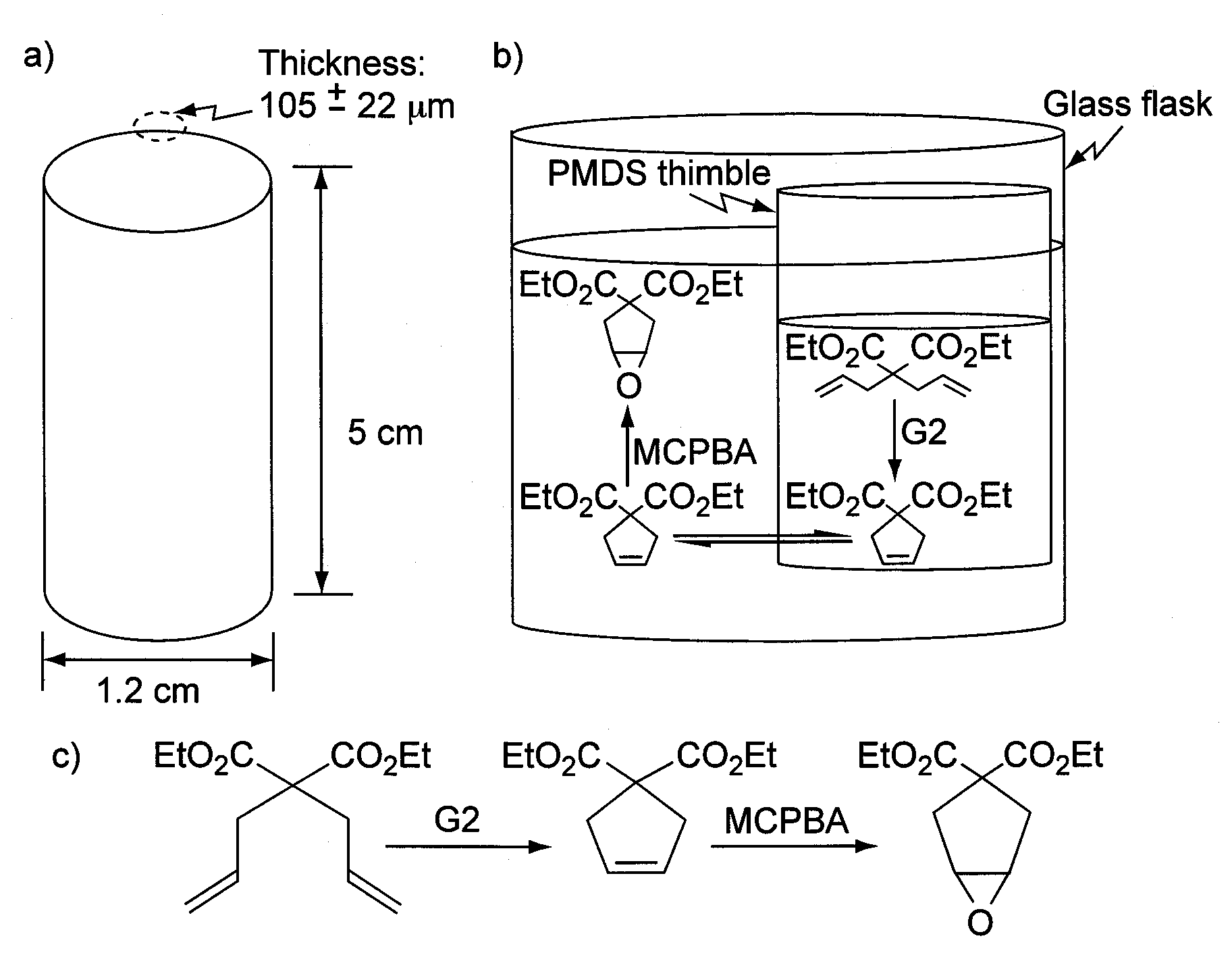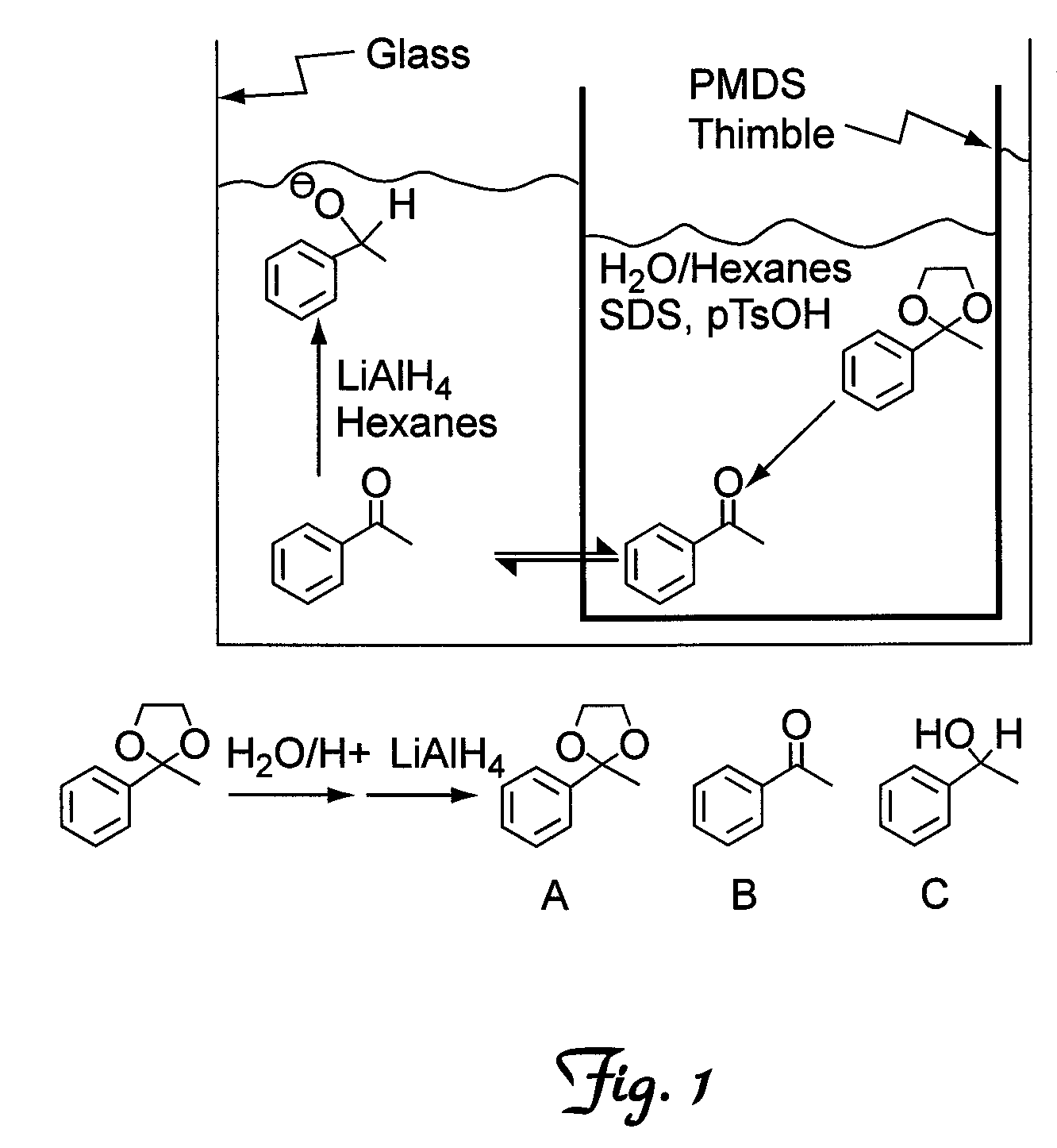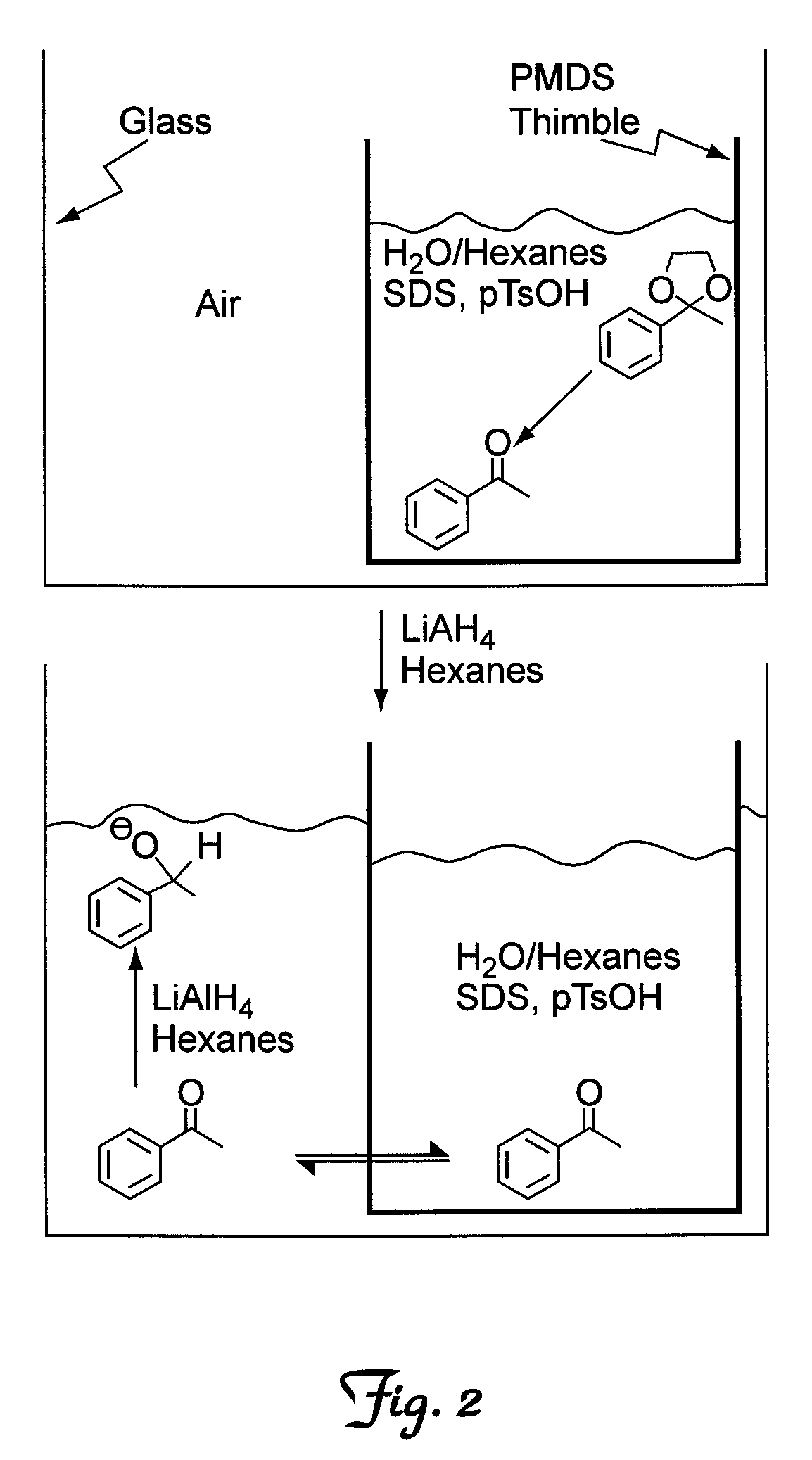Apparatus and method for carrying out multiple reactions
a technology of apparatus and reaction method, applied in the preparation of halogenated hydrocarbons, preparation of heterocyclic compounds, carbonyl compound preparations, etc., can solve the problems of inability to integrate with numerous homogeneous catalysts, development of new catalysts, and inability to achieve cascade sequences
- Summary
- Abstract
- Description
- Claims
- Application Information
AI Technical Summary
Benefits of technology
Problems solved by technology
Method used
Image
Examples
example 1
[0043]To illustrate the invention a cascade reaction was carried out wherein a cyclic ketal was deprotected to provide the corresponding ketone, followed by reduction of the ketone with LiAlH4 to provide the corresponding alcohol. In a typical reaction, water (4 mL), an organic solvent (2 mL), sodium docecyl sulfate (0.2) as a detergent, and a cyclic acetal (0.5 g) were combined inside a PDMS thimble. Outside the PDMS thimble, an organic solvent (5 mL) and LiAlH4 (0.145 g) were combined. The reaction was allowed to proceed for approximately 19 hours. Typically, over 50 equivalents of water to every molecule of LiAlH4 were present, however, the PDMS barrier prevented the water and LiAlH4 from reacting to a significant extent, while allowing for rapid diffusion of the ketone.
[0044]Initially, hexanes were used as the organic solvent to study the number of equivalents of LiAlH4 that were needed to fully reduce the ketone (Table 1). The best results were obtained using 1.25 equivalents o...
example 2
[0066]Hollow PDMS thimbles were constructed that were 1.2 cm in diameter and 5 cm in height with PDMS walls that were 105 μm thick. The bottoms of these thimbles were composed of PDMS, but the tops were left open for easy filling with solvent and catalyst. Grubbs' catalyst was added to a solvent on the interior of the PDMS thimbles and MCPBA to the exterior of the thimbles. The Grubbs' catalysts and MCPBA poison each other even at low loadings of the Grubb's catalyst, but they were site-isolated by the PDMS walls while small molecules readily diffused through the walls to react with the catalyst and reagent. Thus, cascade reactions were possible with the Grubbs' catalyst and MCPBA even though these molecules were vastly incompatible with each other (FIG. 4).
Results and Discussion
[0067]A set of conditions was desired to site-isolate the Grubbs' catalysts on the interior of a PDMS thimble while allowing small molecules to diffuse from the exterior to the interior to react (FIG. 5). Sp...
example 3
[0106]To investigate the general applicability of the site-isolation methods of the invention to the following reaction,
[0107]
several catalysts were studied including PTSA, DMAP, PBDMAP, PBPTSA, and LPDMAP. Commercially available polymer beads with either DMAP or PTSA bonded to their interiors and exteriors were used to mimic the use of star polymers in this study. First, a series of control experiments were completed where all of the reagents and catalysts were added to a glass vial without the presence of a PDMS thimble (entries 7-12 in Table 9). In reactions with free PTSA or DMAP, the conversions to product were all very low due to the catalysts quenching one another. Reactions with PBPTSA and LPDMAP had a 15% conversion to product which indicated that some of the DMAP and PTSA did not quench each other, and the reaction with PBPTSA and PBDMAP as catalysts had a 50% conversion to product. The last result was not surprising because the polymer beads are large (300 mesh for PBDMAP...
PUM
| Property | Measurement | Unit |
|---|---|---|
| diameter | aaaaa | aaaaa |
| diameter | aaaaa | aaaaa |
| thick | aaaaa | aaaaa |
Abstract
Description
Claims
Application Information
 Login to View More
Login to View More - R&D
- Intellectual Property
- Life Sciences
- Materials
- Tech Scout
- Unparalleled Data Quality
- Higher Quality Content
- 60% Fewer Hallucinations
Browse by: Latest US Patents, China's latest patents, Technical Efficacy Thesaurus, Application Domain, Technology Topic, Popular Technical Reports.
© 2025 PatSnap. All rights reserved.Legal|Privacy policy|Modern Slavery Act Transparency Statement|Sitemap|About US| Contact US: help@patsnap.com



